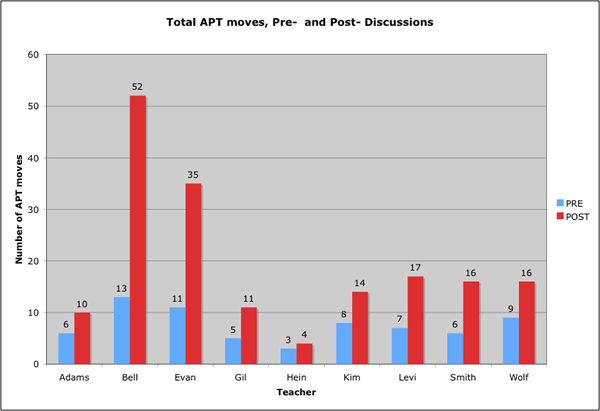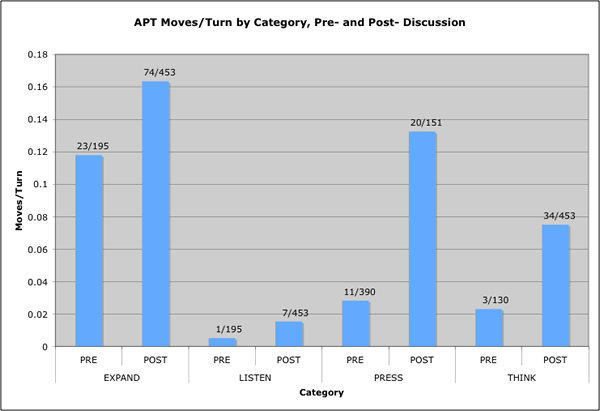Grade 4 Science Discussions 2010-2011
Classroom Discourse Findings
The analysis revealed that teachers incorporated various academically productive talk moves (APT moves) into their practice in facilitating classroom discussions (teacher names appearing in the report are pseudonyms). The teachers used talk moves more often in the post-concept cartoon discussions than in the pre- concept cartoon discussions.

In the post-concept cartoon discussions, the range of total moves was from four to fifty-two moves, whereas in the pre-concept cartoon discussions, the range of moves was from three to nine moves. There were also variations among teachers in the extent to which they used the moves. Some used noticeably more moves, whereas others used fewer moves.

Specifically, the teachers increased considerably their use of Expand and Press for Reasoning talk moves in the post-concept cartoon discussions to encourage students to explicate their thinking, and also used noticeably more Think With Others moves to promote co-construction of ideas among students. On the other hand, they focused less on using Listen moves to prompt students to listen carefully to their peers’ ideas.

Our findings regarding students’ talk indicate that students showed slight increase in their attempts at providing complete reasons for their claims, and in co-constructing ideas with their peers in the pre- and post-discussions and during the lessons from the Inquiry Project curriculum. However, these results need to be understood in light of the nature of the concept cartoons used for the pre- and post-discussions. The pre-concept cartoon presented students with three perspectives, and students typically participated in the discussion with the help of moves like agreeing and disagreeing, resulting in a high number of co-construction moves and complete reasons for their claims. On the other hand, the post- concept cartoon asked students to offer ideas for designing experiments to test different perspectives, but did not encourage them explicitly to co-construct ideas with their peers or provide complete reasons for the claims. This analysis prompted us to use the same concept cartoon for pre- and post-discussions during subsequent data collection in 2012.



